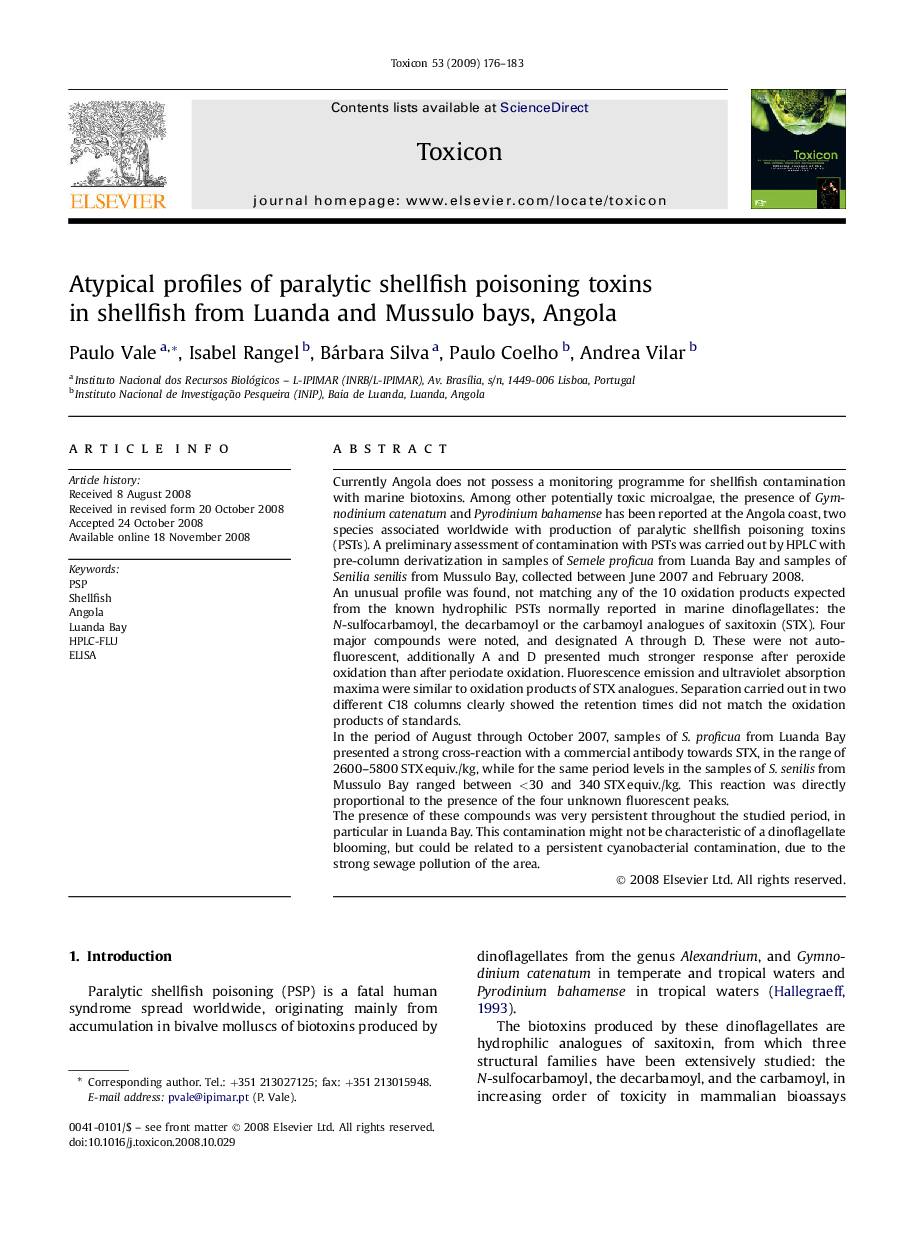| کد مقاله | کد نشریه | سال انتشار | مقاله انگلیسی | نسخه تمام متن |
|---|---|---|---|---|
| 2066508 | 1077189 | 2009 | 8 صفحه PDF | دانلود رایگان |

Currently Angola does not possess a monitoring programme for shellfish contamination with marine biotoxins. Among other potentially toxic microalgae, the presence of Gymnodinium catenatum and Pyrodinium bahamense has been reported at the Angola coast, two species associated worldwide with production of paralytic shellfish poisoning toxins (PSTs). A preliminary assessment of contamination with PSTs was carried out by HPLC with pre-column derivatization in samples of Semele proficua from Luanda Bay and samples of Senilia senilis from Mussulo Bay, collected between June 2007 and February 2008.An unusual profile was found, not matching any of the 10 oxidation products expected from the known hydrophilic PSTs normally reported in marine dinoflagellates: the N-sulfocarbamoyl, the decarbamoyl or the carbamoyl analogues of saxitoxin (STX). Four major compounds were noted, and designated A through D. These were not autofluorescent, additionally A and D presented much stronger response after peroxide oxidation than after periodate oxidation. Fluorescence emission and ultraviolet absorption maxima were similar to oxidation products of STX analogues. Separation carried out in two different C18 columns clearly showed the retention times did not match the oxidation products of standards.In the period of August through October 2007, samples of S. proficua from Luanda Bay presented a strong cross-reaction with a commercial antibody towards STX, in the range of 2600–5800 STX equiv./kg, while for the same period levels in the samples of S. senilis from Mussulo Bay ranged between <30 and 340 STX equiv./kg. This reaction was directly proportional to the presence of the four unknown fluorescent peaks.The presence of these compounds was very persistent throughout the studied period, in particular in Luanda Bay. This contamination might not be characteristic of a dinoflagellate blooming, but could be related to a persistent cyanobacterial contamination, due to the strong sewage pollution of the area.
Journal: Toxicon - Volume 53, Issue 1, January 2009, Pages 176–183